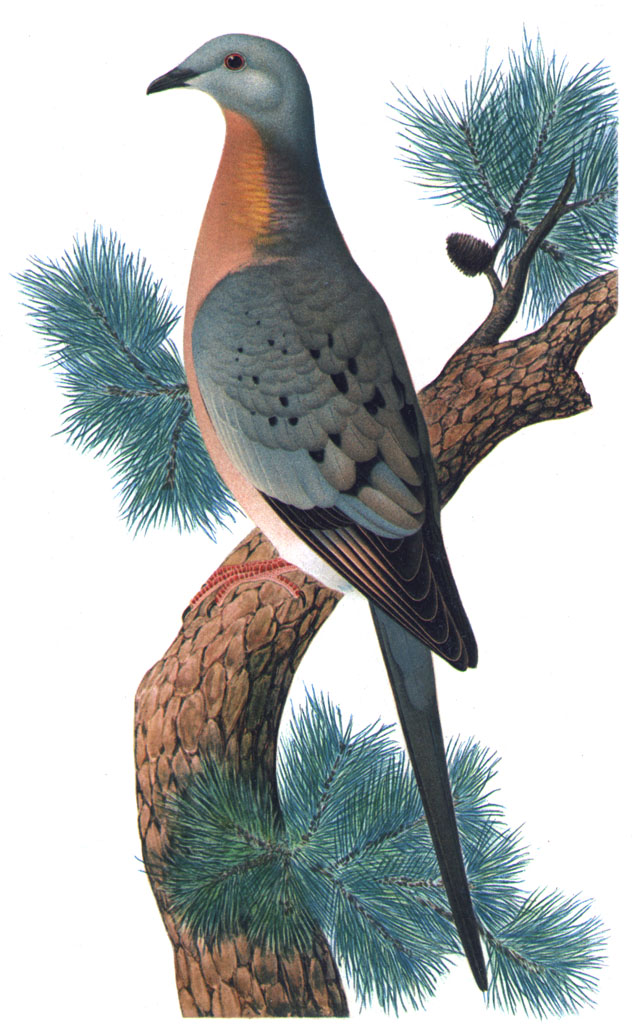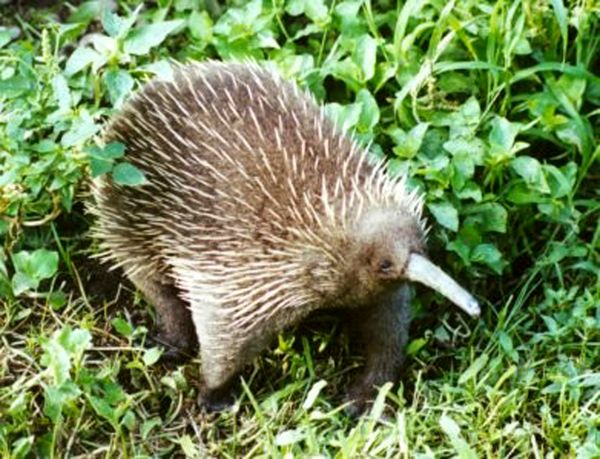|
Southern Pig-footed Bandicoot
The southern pig-footed bandicoot (''Chaeropus ecaudatus'') was a small species of herbivorous marsupial in the genus ''Chaeropus'', the pig-footed bandicoots. Taxonomy The description of the population was revised in 2019, separating a central western population as '' Chaeropus yirratji'' and recognised two earlier descriptions as subspecies ''Chaeropus ecaudatus ecaudatus'' (found in southeastern Australia) and ''Chaeropus ecaudatus occidentalis'' (found in western and southwestern Australia). Description It has been believed to be extinct since the mid-20th century, having reportedly vanished from its final refuge in southern Australia by 1945. It was presumably the first of the two species of ''Chaeropus'' to go extinct. Pig footed-bandicoots were the only marsupials to walk on reduced digits both on the fore and hind feet. In addition, the pig footed-bandicoot diverges from two different species. According to molecular phylogenetic analyses they diverged from other ban ... [...More Info...] [...Related Items...] OR: [Wikipedia] [Google] [Baidu] |
William Ogilby
William Ogilby (1805 – 1 September 1873) was an Irish-born zoologist who was at the forefront of classification and naming of animal species in the 1830s and served as Secretary of the Zoological Society of London from 1839 to 1847. He removed to Ireland during the Great Famine (Ireland), Great Famine and later built the grand but architecturally dismal Altinaghree Castle near Donemana, County Tyrone. Mount Ogilby in Queensland was named for him in 1846. Birth, family background and education Probably born in County Londonderry in 1805, William Ogilby was an illegitimate son of Leslie Ogilby (c1764-1845) who owned a bleachfield, bleaching green at Lackagh in the parish of Dungiven. The Ogilbys had been active in the linen trade since the mid-eighteenth century, and William's uncle Robert Ogilby (c1761-1839), having amassed a fortune as a linen factor in Dublin, bought the lease of the 22,000-acre Dungiven Castle estate and was reckoned "the wealthiest commoner in the North of Ir ... [...More Info...] [...Related Items...] OR: [Wikipedia] [Google] [Baidu] |
Conspecific
Biological specificity is the tendency of a characteristic such as a behavior or a biochemical variation to occur in a particular species. Biochemist Linus Pauling stated that "Biological specificity is the set of characteristics of living organisms or constituents of living organisms of being special or doing something special. Each animal or plant species is special. It differs in some way from all other species...biological specificity is the major problem about understanding life." Biological specificity within ''Homo sapiens'' ''Homo sapiens'' has many characteristics that show the biological specificity in the form of behavior and morphological traits. Morphologically, humans have an enlarged cranial capacity and more gracile features in comparison to other hominins. The reduction of dentition is a feature that allows for the advantage of adaptability in diet and survival. As a species, humans are culture dependent and much of human survival relies on the culture and soc ... [...More Info...] [...Related Items...] OR: [Wikipedia] [Google] [Baidu] |
Mammals Of New South Wales
A mammal () is a vertebrate animal of the Class (biology), class Mammalia (). Mammals are characterised by the presence of milk-producing mammary glands for feeding their young, a broad neocortex region of the brain, fur or hair, and three Evolution of mammalian auditory ossicles, middle ear bones. These characteristics distinguish them from reptiles and birds, from which their ancestors Genetic divergence, diverged in the Carboniferous Period over 300 million years ago. Around 6,640 Neontology#Extant taxon, extant species of mammals have been described and divided into 27 Order (biology), orders. The study of mammals is called mammalogy. The largest orders of mammals, by number of species, are the rodents, bats, and eulipotyphlans (including hedgehogs, Mole (animal), moles and shrews). The next three are the primates (including humans, monkeys and lemurs), the Artiodactyl, even-toed ungulates (including pigs, camels, and whales), and the Carnivora (including Felidae, ... [...More Info...] [...Related Items...] OR: [Wikipedia] [Google] [Baidu] |
Extinct Mammals Of South Australia
Extinction is the termination of an organism by the death of its last member. A taxon may become functionally extinct before the death of its last member if it loses the capacity to reproduce and recover. As a species' potential range may be very large, determining this moment is difficult, and is usually done retrospectively. This difficulty leads to phenomena such as Lazarus taxa, where a species presumed extinct abruptly "reappears" (typically in the fossil record) after a period of apparent absence. Over five billion species are estimated to have died out. It is estimated that there are currently around 8.7 million species of eukaryotes globally, possibly many times more if microorganisms are included. Notable extinct animal species include non-avian dinosaurs, saber-toothed cats, and mammoths. Through evolution, species arise through the process of speciation. Species become extinct when they are no longer able to survive in changing conditions or against superio ... [...More Info...] [...Related Items...] OR: [Wikipedia] [Google] [Baidu] |
Mammal Extinctions Since 1500
A mammal () is a vertebrate animal of the Class (biology), class Mammalia (). Mammals are characterised by the presence of milk-producing mammary glands for feeding their young, a broad neocortex region of the brain, fur or hair, and three Evolution of mammalian auditory ossicles, middle ear bones. These characteristics distinguish them from reptiles and birds, from which their ancestors Genetic divergence, diverged in the Carboniferous Period over 300 million years ago. Around 6,640 Neontology#Extant taxon, extant species of mammals have been described and divided into 27 Order (biology), orders. The study of mammals is called mammalogy. The largest orders of mammals, by number of species, are the rodents, bats, and eulipotyphlans (including hedgehogs, Mole (animal), moles and shrews). The next three are the primates (including humans, monkeys and lemurs), the Artiodactyl, even-toed ungulates (including pigs, camels, and whales), and the Carnivora (including Felidae, ... [...More Info...] [...Related Items...] OR: [Wikipedia] [Google] [Baidu] |
Extinct Marsupials
Extinction is the termination of an organism by the death of its last member. A taxon may become functionally extinct before the death of its last member if it loses the capacity to reproduce and recover. As a species' potential range may be very large, determining this moment is difficult, and is usually done retrospectively. This difficulty leads to phenomena such as Lazarus taxa, where a species presumed extinct abruptly "reappears" (typically in the fossil record) after a period of apparent absence. Over five billion species are estimated to have died out. It is estimated that there are currently around 8.7 million species of eukaryotes globally, possibly many times more if microorganisms are included. Notable extinct animal species include non-avian dinosaurs, saber-toothed cats, and mammoths. Through evolution, species arise through the process of speciation. Species become extinct when they are no longer able to survive in changing conditions or against superior ... [...More Info...] [...Related Items...] OR: [Wikipedia] [Google] [Baidu] |
Peramelemorphs
The order Peramelemorphia includes the bandicoots and bilbies. All members of the order are endemic to Australia-New Guinea and most have the characteristic bandicoot shape: a plump, arch-backed body with a long, delicately tapering snout, very large upright ears, relatively long, thin legs, and a thin tail. Their size varies from about 140 grams up to 4 kilograms, but most species are about one kilogram. Phylogeny Placement within Marsupialia The position of the Peramelemorphia within the marsupial family tree has long been puzzling and controversial. There are two morphological features in the order that appear to show a clear evolutionary link with another marsupial group: the type of foot, and the teeth. Unfortunately, these clear signposts point in opposite directions. All members of the order are polyprotodont (have several pairs of lower front teeth)—in the case of the Peramelemorphia, three pairs. This suggests that they have evolved within Dasyuromorphia (mar ... [...More Info...] [...Related Items...] OR: [Wikipedia] [Google] [Baidu] |
Extinct Mammals Of Australia
Extinction is the termination of an organism by the death of its last member. A taxon may become functionally extinct before the death of its last member if it loses the capacity to reproduce and recover. As a species' potential range may be very large, determining this moment is difficult, and is usually done retrospectively. This difficulty leads to phenomena such as Lazarus taxa, where a species presumed extinct abruptly "reappears" (typically in the fossil record) after a period of apparent absence. Over five billion species are estimated to have died out. It is estimated that there are currently around 8.7 million species of eukaryotes globally, possibly many times more if microorganisms are included. Notable extinct animal species include non-avian dinosaurs, saber-toothed cats, and mammoths. Through evolution, species arise through the process of speciation. Species become extinct when they are no longer able to survive in changing conditions or against superio ... [...More Info...] [...Related Items...] OR: [Wikipedia] [Google] [Baidu] |
Extinct Animals Of Australia
This is a list of Australia-New Guinea species extinct in the Holocene that covers extinctions from the Holocene epoch, a geologic epoch that began about 11,650 years before present (about 9700 BCE) and continues to the present day. The Australian continent is also called Australia-New Guinea or Sahul to avoid confusion with the country of Australia. The continent includes mainland Australia, Tasmania, the island of New Guinea, the Aru Islands, and other nearby islands. Australia-New Guinea is divided between three countries: Australia (mainland Australia and Tasmania), Papua New Guinea (eastern New Guinea), and Indonesia (Western New Guinea and the Aru Islands). Extinct animals from the rest of Indonesia are covered in List of Asian animals extinct in the Holocene. Species from the outlying islands of the country of Australia and the Bismarck Archipelago of Papua New Guinea are included below. The Solomon Islands archipelago, split between Papua New Guinea (Autonomous ... [...More Info...] [...Related Items...] OR: [Wikipedia] [Google] [Baidu] |
Mammals Described In 1838
A mammal () is a vertebrate animal of the class Mammalia (). Mammals are characterised by the presence of milk-producing mammary glands for feeding their young, a broad neocortex region of the brain, fur or hair, and three middle ear bones. These characteristics distinguish them from reptiles and birds, from which their ancestors diverged in the Carboniferous Period over 300 million years ago. Around 6,640 extant species of mammals have been described and divided into 27 orders. The study of mammals is called mammalogy. The largest orders of mammals, by number of species, are the rodents, bats, and eulipotyphlans (including hedgehogs, moles and shrews). The next three are the primates (including humans, monkeys and lemurs), the even-toed ungulates (including pigs, camels, and whales), and the Carnivora (including cats, dogs, and seals). Mammals are the only living members of Synapsida; this clade, together with Sauropsida (reptiles and birds), constitutes ... [...More Info...] [...Related Items...] OR: [Wikipedia] [Google] [Baidu] |
Livestock
Livestock are the Domestication, domesticated animals that are raised in an Agriculture, agricultural setting to provide labour and produce diversified products for consumption such as meat, Egg as food, eggs, milk, fur, leather, and wool. The term is sometimes used to refer solely to animals which are raised for consumption, and sometimes used to refer solely to farmed ruminants, such as cattle, sheep, and goats. The breeding, maintenance, slaughter and general subjugation of livestock called ''animal husbandry'', is a part of modern agriculture and has been practiced in many cultures since humanity's transition to farming from hunter-gatherer lifestyles. Animal husbandry practices have varied widely across cultures and periods. It continues to play a major economic and cultural role in numerous communities. Livestock farming practices have largely shifted to intensive animal farming. Intensive animal farming increases the yield of the various commercial outputs, but also nega ... [...More Info...] [...Related Items...] OR: [Wikipedia] [Google] [Baidu] |





